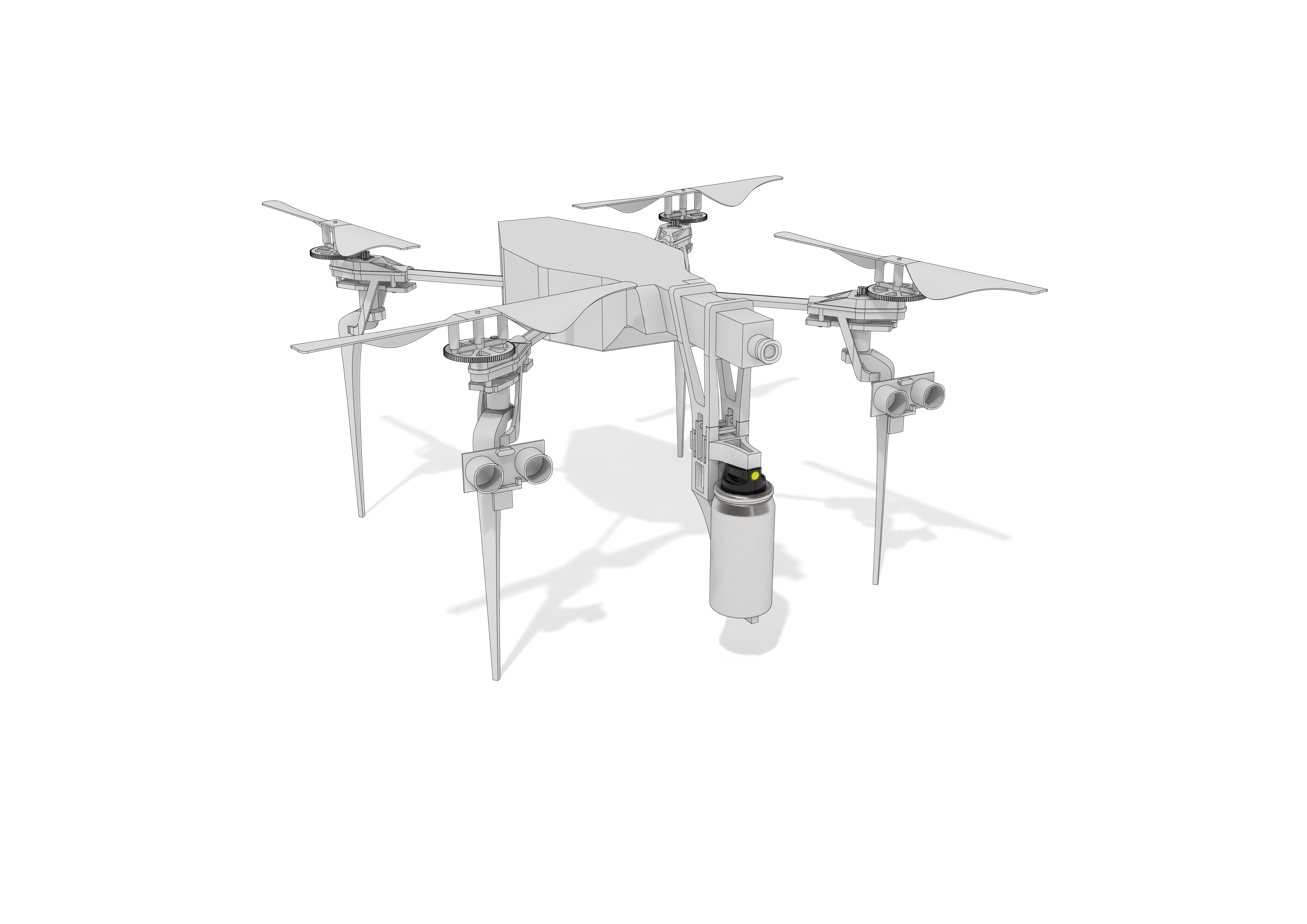Tag your favorite (legal) wall with via drone.
Essentially the Graffiti Drone project is the following:
GML files -> Graffiti Drone -> Parrot AR Drone 2.0 + Arduino -> Tagged wall
Warning: this is still under active development and not everything is completed yet. The flight control is still a bit wonky. Suggestions and feedback are welcome as we finish building and testing...
- Build your Arduino circuits
- Print the parts for the drone
- Setup your Parrot AR Drone 2.0
- Install the gem
- Get taggin'
We are using a Wifi Redback for this setup.
Hardware list:
- Wifi Redback Yellowjacket compatible Arduino (with USB breakout board to program like the FT232RL)
- 2 distance sensors (HC-SR04)
- DC/DC converter (TSR 1-2450) for Redback
- Custom cable of mini-Tamiya female to split female / raw wires (mini-Tamiya out of the Parrot AR Drone battery is flipped)
Solenoid circuit hardware list (with suggestions):
- Solenoid (HCNE1-0520) - may be able to find something better for the power/weight tradeoff
- Diode (1N4004)
- Resistor (2.2 kohm)
- MOSFET transistor (IRLZ44)
The circuit layout can be found in the project under the schematics directory.
Steps for Arudino software:
- Download the wifi server code and rename as 'CuHead' in your Arduino libraries area
- Download NewPing library to your Arduino libraries area
- Update the
sketches/GraffitiDroneWiServer.inosketch with your wifi hotspot information - Compile and upload
Tips and warnings:
- If you don't flip the polarity of the mini-Tamiya coming out of the Parrot AR battery you will blow your diode in the circuit!
Arduino Nano w/ ATmega 3281should be the board selected in the Arduino IDE or you will get an avrdude error when uploading- Make sure your
CuHead/apps-conf.hhasAPP_WISERVERuncommented (and the rest commented out) - Don't attach anything to pins 9-13 of the Redback since that is used for wifi
We are using the Parrot AR Drone 2.0 for this project. If you want it to work with a different drone you should replace the argus gem with something else and update the GraffitiDrone.rb class to use it.
Update the drone so it will connect to your wifi network. You will need to do this every time you unplug the drone since the default settings are restored on startup.
You may want to consider getting a high amperage battery for the drone too to extend flight time and offset the power draw of the Arduino and solenoid.
We use a 3D printer for the various pieces that extend and replace the body of the drone. See the 3d-models directory for the 3D Rhino and STL files for the additonal parts.
The AR Drone will look like the following with the new parts:
We use the Montana Micro 30 ml spray can. You will need to adjust the 3D model if you use something else.
Simple:
install gem graffiti_drone
Place the drone near a wall (within a foot or two) and run the following command:
graffiti tag FILE
FILE is the GML file you want the drone to tag.
Console output will keep you up to date on what the drone is trying to do.
There are some very limited rspec tests that have been added for a few of the modules, but more are needed.
If you want to contribute here are some ideas that we have had that would make the process even better:
- Configurable starting point and size mapping for tags
- Better system for understanding current position on wall (maybe computer vision based?)
- Stencil mode
- Actual PIDs for adjustment of wall distance and yaw
There are also a bunch of places in the code with TODO marked for changes and improvements.
- Fork it ( https://github.com/chrizbo/graffiti_drone/fork )
- Create your feature branch (
git checkout -b my-new-feature) - Commit your changes (
git commit -am 'Add some feature') - Push to the branch (
git push origin my-new-feature) - Create a new Pull Request
Code released under the MIT license.
